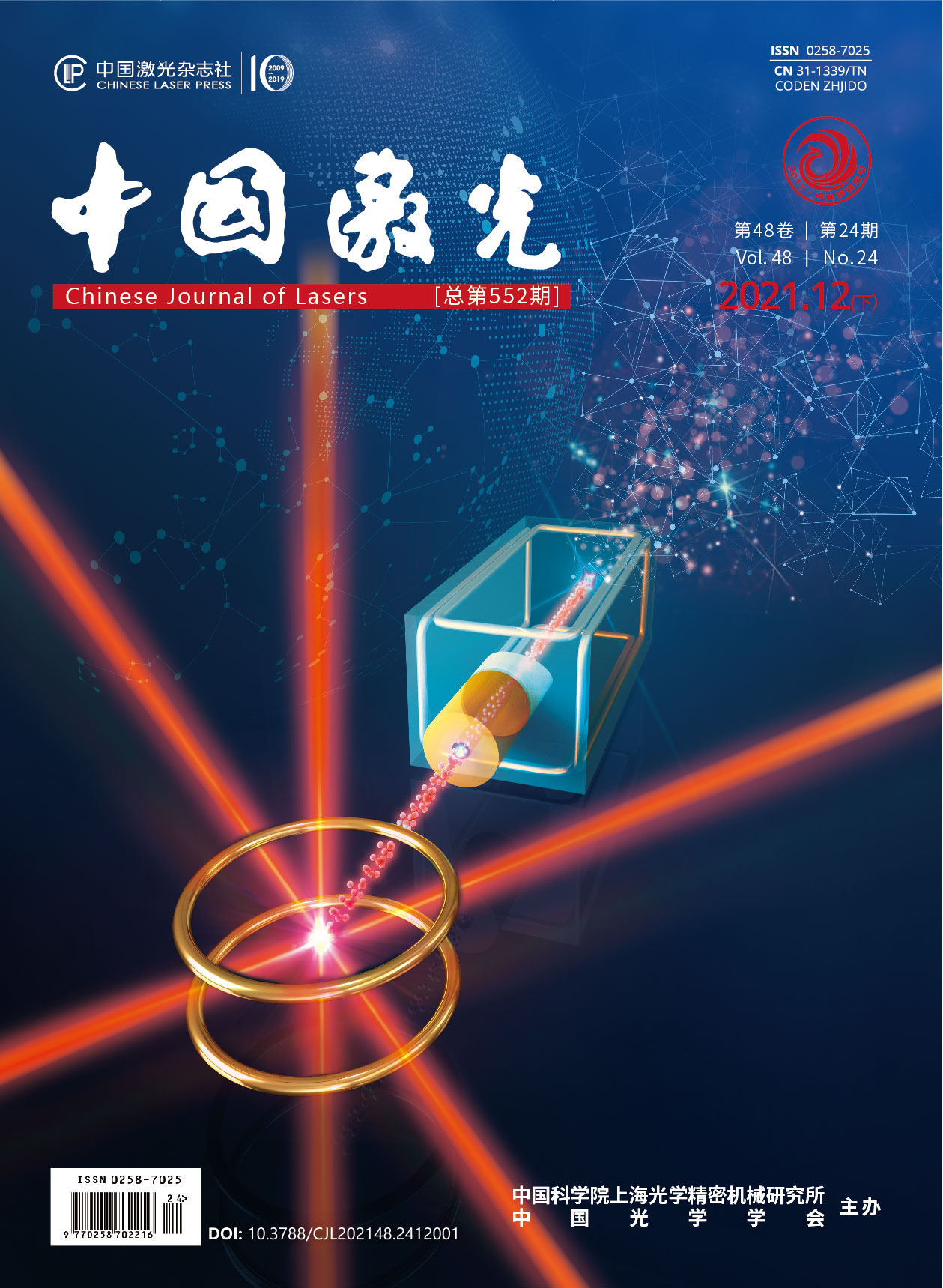基于非绝热型微光纤的高灵敏度磁场传感器  下载: 760次
下载: 760次
Objective Electromagnetic fields have the substantial interference and influence on electronic device systems, and their online detection has been a persistent problem in sensor and detection technologies. Furthermore, the environmental conditions for electromagnetic field measurement are challenging, and traditional sensors are huge and have poor anti-interference ability. Optical-fiber magnetic field sensors are compact and have high sensitivity and strong environmental adaptability, which can withstand high temperature, nuclear radiation and electromagnetic interference. Therefore, it has good application potential in online electromagnetic field detection. Magnetic fluid is a new type of functional material with an adjustable refractive index, birefringence and light transmittance. It combines the characteristics of solid magnetic material with the fluidity of a liquid, making it easy to integrate with optical fiber. In this study, we propose a non-adiabatic optical-fiber magnetic field sensor, which is made by combining arc discharge with hydrogen flame heating. It can realize the rapid and accurate measurement of an external weak magnetic field. The basic strategy and research results will help in the development of a new optical-fiber magnetic field sensor.
Methods First, two cascaded concave cones were fabricated on a single-mode fiber using arc discharge. The single-mode fiber with a concave cone structure was then fixed on the flame taper machine’s motor, and the hydrogen flame was manually adjusted to align with the concave cone structure for drawing. The spectrum changes during the preparation of micro-fiber were observed in real time using a spectrometer. Then, the supercontinuum source is used as the light source, and the cone is placed between the two coils. The electrified coil produces a uniform vertical magnetic field, and the voltage changes the magnetic field intensity. The effect of magnetic field intensity on the wavelength shift was investigated using a spectrometer to analyse the spectrum with the change of the magnetic field intensity.
Results and Discussions The optical-fiber magnetic field sensor has high magnetic field sensitivity, with a maximum sensitivity of 193.28 pm/Oe, a detection limit of 0.187 Oe and a quality factor of 8.77×10 -3 Oe -1 (Fig. 5). When the magnetic field intensity is 0~30 Oe, the transmission spectrum remains unchanged. This is because the magnetic field intensity is small, which makes the effect on the nanoparticles too weak to change the arrangement of nanoparticles, causing the refractive index of the magnetic fluid to change slightly, and the wavelength shift to be incomprehensible. The magnetic field sensitivity of the interference peak increases with the wavelength (Fig. 6). The experimental results show that if the sensor’s sensitivity is improved, the working wavelength can be located in the long wavelength band, or the micro-fiber’s diameter can be reduced. Furthermore, the measurement range of the magnetic field intensity can be expanded by increasing the threshold value of magnetic fluid material. Because the thermal optical coefficient of the magnetic fluid is approximately -2.4×10 -4 ℃ -1 and the refractive index of the magnetic fluid changes with the external magnetic field is approximately 3×10 -2 mT -1, the influence of temperature is considerably less than that of the magnetic field. That is, when the temperature changes greatly, the spectral change caused by temperature is considerably less than that caused by magnetic field change. Thus, the influence of external temperature change on the sensor is small.
Conclusions A high-sensitivity magnetic field sensor based on the integration of micro-fiber and magnetic fluid is proposed. A thin and uniform non-adiabatic micro-optical fiber is fabricated in the central region of the tapered region where the diameter of the fiber decreases sharply by combining arc discharge with hydrogen flame heating. The fiber structure has a strong evanescent field, which considerably improves the interaction between the light field and the external field. Therefore, it is more sensitive to the changes in the physical parameters of the external environment. Through integrating it with magnetic fluid, the measurement of an external weak magnetic field is realized based on the tunable refractive index of magnetic fluid. The results show that the sensitivity is 193.28 pm/Oe and the detection limit is approximately 0.187 Oe in 0--150 Oe. Further research shows that the sensor’s performance can be greatly improved by reducing the diameter of the micro-fiber and increasing its length. The sensor has the advantages of compact, low cost and simple manufacturing approach, which has potential application potential in the fields of online monitoring of the electromagnetic field in a smart grid, prospecting engineering and detection of magnetic field source.
齐晨英, 徐常平, 白扬博, 李斌, 苗银萍. 基于非绝热型微光纤的高灵敏度磁场传感器[J]. 中国激光, 2021, 48(24): 2406003. Chenying Qi, Changping Xu, Yangbo Bai, Bin Li, Yinping Miao. High-Sensitivity Magnetic Field Sensor Based on Non-Adiabatic Micro-Fiber[J]. Chinese Journal of Lasers, 2021, 48(24): 2406003.







